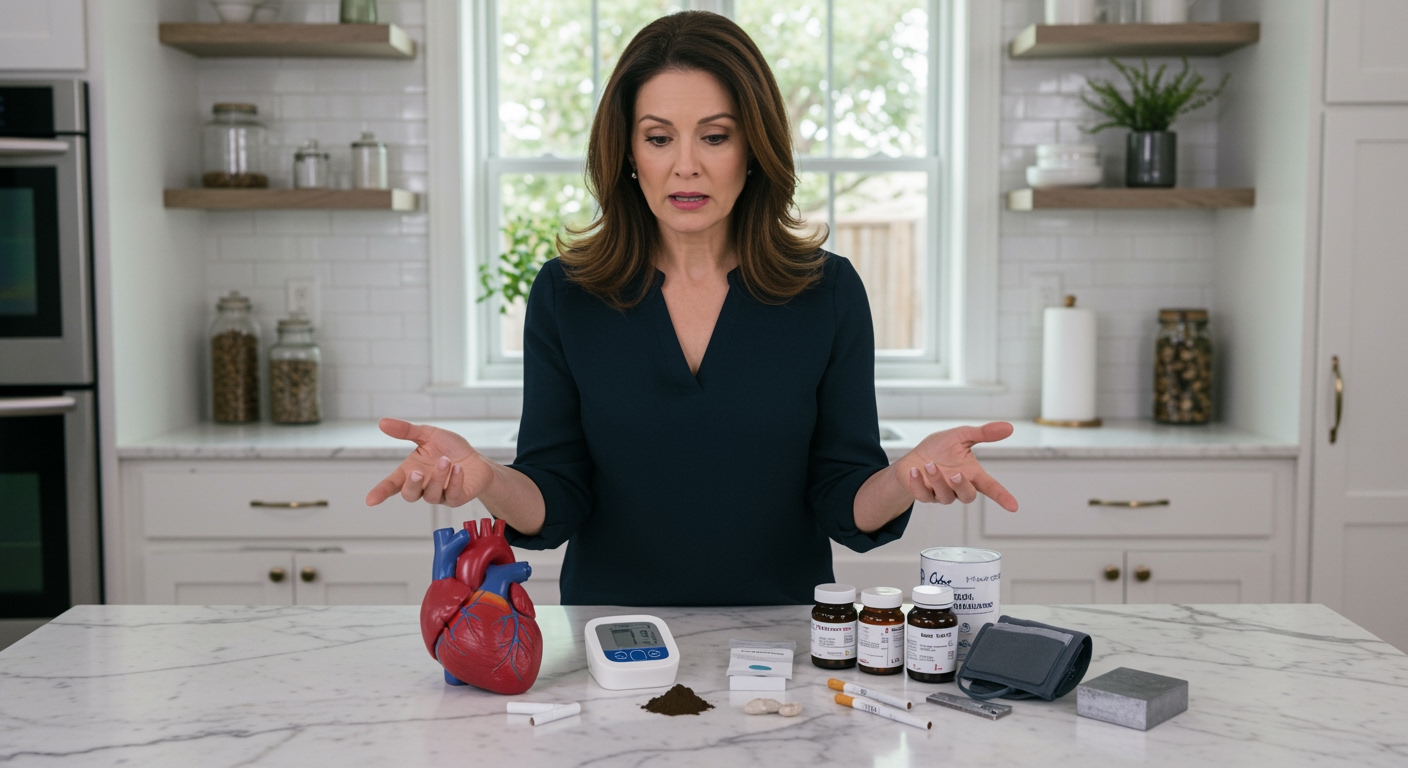✪ Key Takeaway: Never take cadmium – it is a toxic heavy metal that damages blood vessels and worsens low blood pressure conditions.
Introduction
Some people wonder if cadmium might help with low blood pressure because they heard it affects the cardiovascular system.
This dangerous misconception could lead to serious health problems because cadmium is actually a toxic heavy metal that harms your body in multiple ways.
Hi, I am Abdur, your nutrition coach and today I am going to explain why cadmium should never be consumed by anyone, especially those with low blood pressure.
What Is Cadmium and Why Is It Dangerous?
Cadmium is a toxic heavy metal that occurs naturally in the earth but becomes concentrated through industrial processes and pollution.
Your body has no biological need for cadmium and cannot process it safely like essential minerals such as iron or zinc.
When cadmium enters your system, it accumulates in your kidneys, liver, and bones where it causes cellular damage over time.
The metal interferes with normal cellular functions by replacing essential minerals in enzyme systems throughout your body.
Even small amounts of cadmium exposure can lead to kidney disease, bone weakness, and cardiovascular problems that develop gradually over years.
Research shows that cadmium exposure increases oxidative stress and inflammation, which directly damages blood vessel walls and heart tissue.
✪ Fact: Cadmium has a biological half-life of 10-30 years, meaning it stays in your body for decades once absorbed.
How Does Cadmium Affect Blood Pressure?
Cadmium exposure typically causes high blood pressure rather than low blood pressure through multiple harmful mechanisms.
The toxic metal damages the internal lining of blood vessels called the endothelium, which normally helps regulate blood pressure through nitric oxide production.
When cadmium disrupts endothelial function, your blood vessels lose their ability to relax and dilate properly, leading to increased vascular resistance.
Cadmium also interferes with calcium channels in smooth muscle cells within blood vessel walls, causing them to contract more forcefully.
The metal promotes inflammation and oxidative stress that further stiffens arteries and reduces their flexibility over time.
Studies consistently show that people with higher cadmium levels in their blood and urine have increased risk of hypertension and cardiovascular disease.
For someone with existing low blood pressure, cadmium exposure would create additional cardiovascular stress without providing any therapeutic benefit.
✪ Note: Cadmium exposure increases cardiovascular disease risk by 30-50% according to population studies.
Where Does Cadmium Exposure Come From?
Most people encounter cadmium through cigarette smoke, which contains high concentrations of this toxic metal from tobacco plants.
Food sources include shellfish, organ meats, and leafy vegetables grown in contaminated soil, though levels vary significantly by region.
Industrial pollution from mining, smelting, and battery manufacturing can contaminate local water supplies and agricultural areas with elevated cadmium levels.
Some imported products like jewelry, toys, and ceramics may contain cadmium that can be absorbed through skin contact or accidental ingestion.
Occupational exposure occurs in workers involved with metal processing, welding, and battery production without proper protective equipment.
The key point is that all these exposures are accidental or environmental – no legitimate medical treatment involves intentional cadmium consumption.
✪ Pro Tip: Smokers have 4-5 times higher cadmium levels than non-smokers due to tobacco contamination.
What Are Safe Alternatives for Low Blood Pressure?
Instead of considering dangerous substances like cadmium, focus on proven safe methods to support healthy blood pressure levels.
Adequate hydration helps maintain blood volume, which is crucial for people with low blood pressure who may experience dizziness or fatigue.
Increasing sodium intake moderately through natural sources like sea salt can help retain fluid and support blood pressure in hypotensive individuals.
Regular physical activity, particularly resistance training, helps improve circulation and strengthens the cardiovascular system over time.
Compression stockings can help prevent blood from pooling in the legs, which is especially beneficial for people with orthostatic hypotension.
Small, frequent meals help prevent post-meal blood pressure drops that some people with low blood pressure experience.
If lifestyle changes are insufficient, work with a healthcare provider to explore safe medical options rather than experimenting with toxic substances.
✪ Pro Tip: Drinking 16 ounces of water can temporarily raise blood pressure by 10-15 mmHg within 15 minutes.
The Bottom Line
Cadmium is never appropriate for treating low blood pressure or any other health condition because it is a toxic heavy metal that causes serious harm to your cardiovascular system and other organs.
Your health is too precious to gamble with toxic substances when safe, effective alternatives exist for managing low blood pressure.
I encourage you to share any questions or experiences you may have about managing low blood pressure safely in the comment section below.
References
At NutritionCrown, we use quality and credible sources to ensure our content is accurate and trustworthy. Below are the sources referenced in creating this article:
- Frontiers in Public Health: Cadmium exposure and cardiovascular disease risk
- Annals of Occupational and Environmental Medicine: Cadmium exposure and hypertension
- PMC: Cadmium and cardiovascular disease
- Portuguese Journal of Cardiology: Cadmium cardiovascular disease overview





